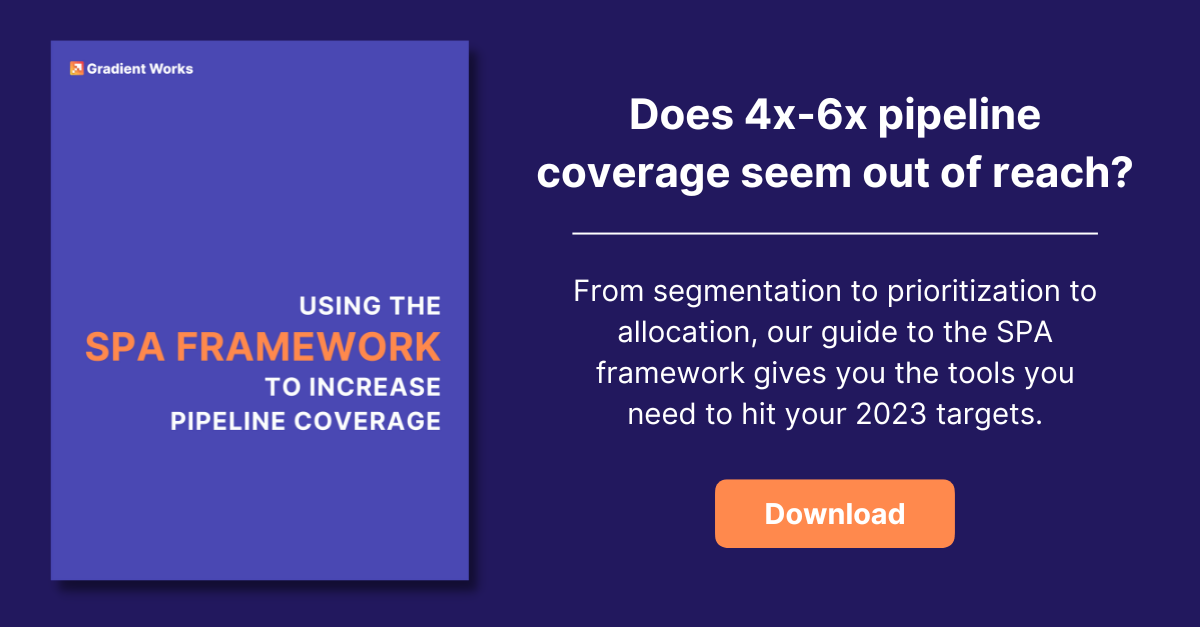Qualifying inbound leads requires a systematic approach to evaluating a new lead's potential and determining its fit as a potential customer.
In this post, we're specifically talking about B2B inbound lead qualification and prioritization, but the concepts are similar for other kinds of businesses as well.
Here's a step-by-step guide on how to qualify inbound leads:
1. Establish inbound lead qualification criteria
Define the attributes that make a lead a good fit for your business. This includes firmographics like company size, industry, location; behavioral data like marketing engagement or intent; and any other relevant factors specific to your business. What criteria comprise your ICP? Here are some possibilities.
-
Demographic fit: Review the lead's demographic data to determine if they meet the basic criteria of your target market. Assess factors such as their industry, company size, job title, and location to gauge their relevance to your products or services.
-
Firmographic fit: Review the lead's firmographic data to determine if they meet the basic criteria of your target customer account. That may include factors such as a company's industry, company size, and location.
-
Engagement level: Analyze the lead's interactions with your business to gauge their level of interest and engagement. Consider metrics such as email opens, click-through rates, website visits, content downloads, and social media interactions. Generally, the more engaged a lead is, the more likely they are to convert.
-
Behavioral signals: Look for behavioral signals that indicate buying intent or readiness. For example, a lead who repeatedly visits pricing or product pages, requests a demo, or asks specific questions about your offerings is likely further along in the buying process. You may also have access to intent data, which can help you determine a lead's buying stage.
-
Lead source: Consider the lead's source and the channel through which they discovered your company. Some lead sources, such as referrals or targeted campaigns, may indicate higher quality leads compared to colder sources like paid advertising.
2. Implement lead scoring
Develop a lead scoring system to assign numerical values or scores to leads based on their alignment with the qualification criteria you established in step 1. Assign higher scores to leads that closely match your ideal customer profile and demonstrate strong buying signals or engagement.
This may be automated or may go through manual review, depending on your sales setup and team size. Leads that meet a certain score threshold should be qualified as MQLs. This will help with your lead prioritization efforts below as well.
3. Establish MQL and SQL criteria
After you've decided what goes into initial lead qualification, you'll want to consider what criteria a lead needs to have to move from an MQL to an SQL. This is a form of lead prioritization - what leads should sales reps work first?
- MQL (Marketing Qualified Lead): An MQL is a lead that has been deemed qualified by the marketing team based on certain basic criteria and actions indicating their potential interest in the company's products or services. MQLs are typically in the earlier stages of the buying journey and may require further nurturing and engagement before being handed off to the sales team.
- SQL (Sales Qualified Lead): An SQL is a lead that has been qualified and deemed ready for direct sales engagement by the sales team. SQLs have typically met more stringent and specific criteria than MQLs, as well as demonstrated a higher level of buying intent or readiness, indicating they are more likely to convert into customers.
The transition from MQL to SQL typically involves a handoff process between the marketing and sales teams, where the marketing team passes qualified MQLs to the sales team for direct engagement.
4. Determine opportunity creation and stage changes
Next, you'll need to establish the criteria that are required for a lead to become an opportunity. What makes an SQL turn into an SQO?
- Timing and budget: Assess the lead's buying timeline and budget. Evaluate whether their purchasing timeframe aligns with your sales cycle and if they have the financial resources to afford your products or services.
-
Decision makers: Determine if the lead has decision-making authority or if you need to involve other stakeholders. Engaging early with decision-makers increases the likelihood of successful conversion.
-
Activity: If the lead is engaging with your outreach, agrees to a demo, schedules a meeting, and so on, is that enough to convert them to a stage 0 or 1 opportunity? Every company's criteria are different, so figure out what works for your team. Some companies don't create an opportunity until a meeting occurs, but others create the opp when the meeting is scheduled.
5. Implement lead nurturing
For leads that don't meet immediate qualification criteria but show potential, you can implement lead nurturing strategies. This involves providing leads with valuable content, educational resources, and regular communication to keep them engaged and build a relationship until they are ready to convert. Usually, marketing handles this lead nurturing using a marketing automation platform. In this case, a lead may turn into an MQL or SQL after some number or types of nurture engagements.
6. Continuously optimize
Regularly review and refine your lead qualification criteria based on feedback from the sales team, conversion rates, and ongoing analysis of successful and unsuccessful lead conversions. This iterative process helps improve the accuracy of lead qualification over time.
Taking a systematic approach to how to qualify inbound leads and prioritize your sales and marketing efforts will help you convert more leads into customers.




